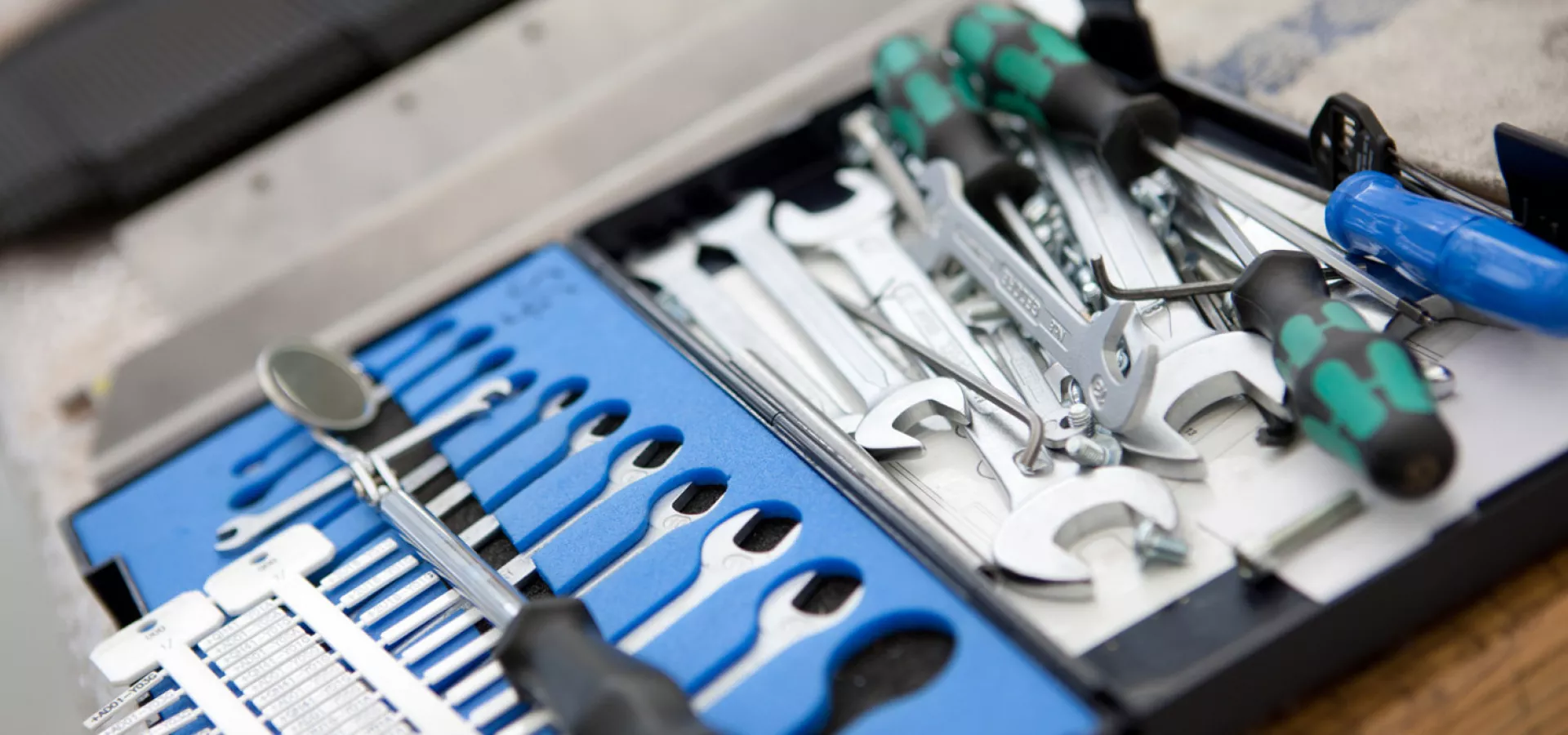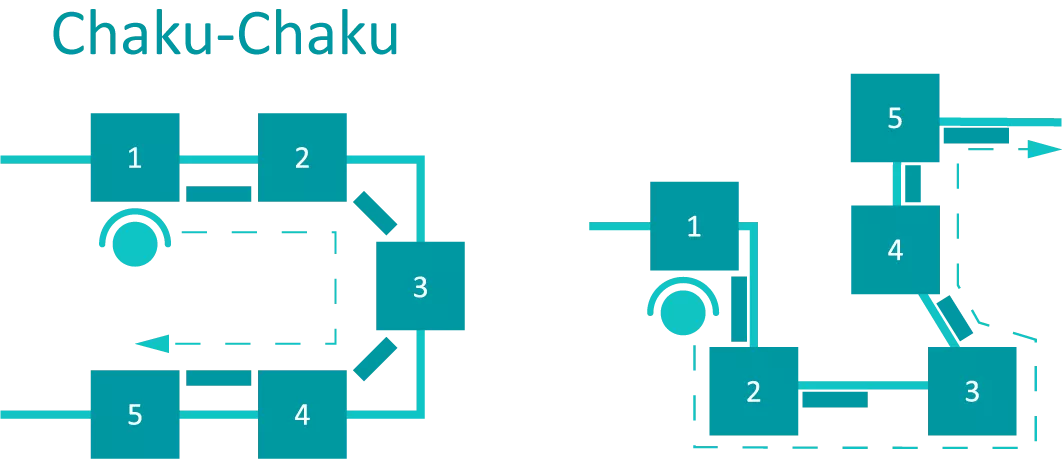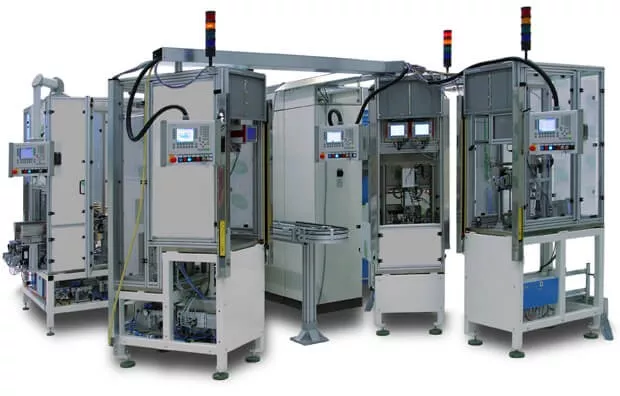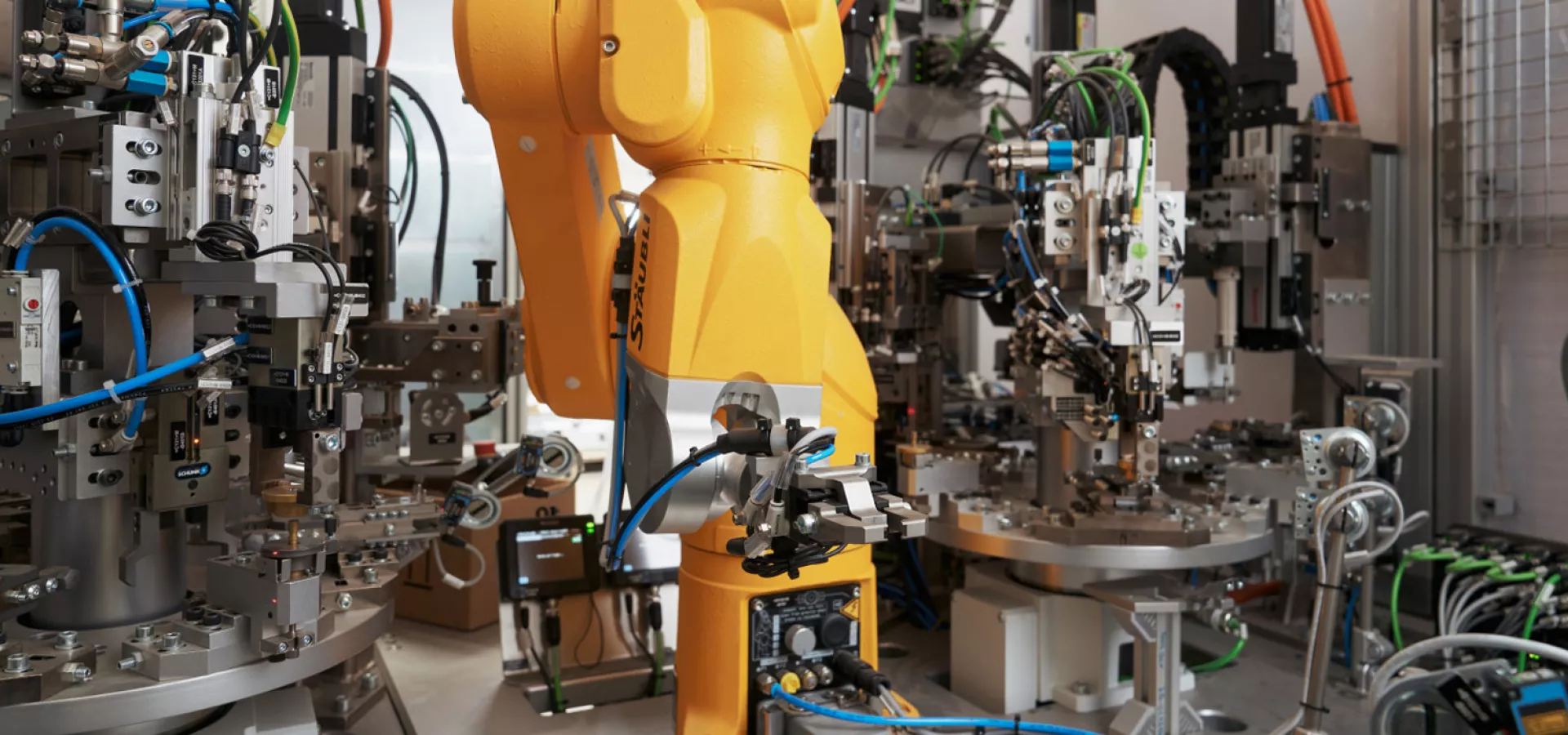
Chaku-Chaku – Work organization model to increase productivity
Chaku-Chaku is a work organization model whose name was taken from Japanese and can be translated literally as "load, load" in German. Alternatively, the term "flow principle" is often used in this country. In industry, work organization models such as the Chaku-Chaku line aim to achieve greater standardization and improved process control. In the long term, this should result in an increase in productivity combined with an increase in profit margin. Chaku-Chaku can be understood as an extension or further development of the One-Piece-Flow model.
Chaku-Chaku is a model of flow and series production in which all the workstations needed to manufacture a product are arranged in such a way that the distances between them are as short as possible. In this way, the workstations are often arranged in a shape reminiscent of a U or an omega. Thanks to this arrangement, it is possible for a single employee to operate several machines or workstations simultaneously or in parallel. He is usually only responsible for loading and unloading the respective machines and for transporting the products from one station to the next. The machine itself performs its task without the employee's intervention. Depending on the complexity, it is also possible to equip a Chaku-Chaku line with several employees, each of whom is assigned individual tasks. In practice, models of the Chaku-Chaku with one to three workers have proven to be successfully feasible.

What are the potential advantages of chaku-chaku?
By eliminating long transport routes between individual workstations, time wasted in manufacturing a product is minimized. At the same time, expensive and complex linking machines become obsolete. Not only do these no longer have to be purchased, they can even be dismantled under certain circumstances. Within the Chaku-Chaku line, manual workstations can also be integrated, depending on the product. This can also help to save or dismantle expensive machines. Since the loading and starting of the individual machines at the respective workstations is carried out by the employee(s), machines working at different speeds or slower can be coordinated with each other. This leads to improved time coordination without undesirable losses. In this case, however, it must be planned for the need to set up stations within the Chaku-Chaku line for the intermediate storage of partially finished products.
Another advantage of chaku-chaku is the shortened training period for the employees working within the flow line. As a rule, they only have to deal with a few complex tasks and are only required to load and unload the machines. There is no need for time-consuming training courses and no need to hire skilled workers. This also has a cost-saving effect in the long term.
What are the potential disadvantages of chaku-chaku?
Some of the advantages of Chaku-Chaku mentioned above can also be criticized from a specific point of view. In this regard, one would be the monotony of the activity required of the employee, which can lead to highly one-sided stress and corresponding health disadvantages. In addition, since the working hours are accelerated in the Chaku-Chaku line, stress and physical strain are added.
In parallel, the lack of trained specialists can also be seen as problematic in the long term. Employees who work in a chaku-chaku line are often trained within a very short time and usually do not need any specific training for their jobs. From the employee's point of view, this is a cause for concern because the wage level drops and it is also difficult to increase wages. From a wage perspective, additional qualifications have practically no effect on the individually designated job within the chaku-chaku line. This is precisely why unions and works councils often oppose implementation of the chaku-chaku model.



